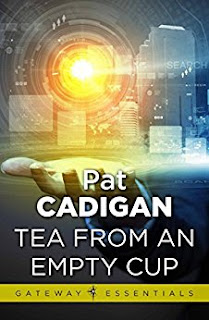Bookmark Explorer coming for Firefox and Opera
I've decided the functionality of the Bookmark Explorer extension was pretty close to final and, before I refactor it to a new form, I wanted to make sure it works for all the browsers that support the WebExtensions mechanism, mainly Chrome, Firefox and Opera. Frankly, I have no idea why anyone would use Firefox or Opera, but if you do, I've got great news for you: I have published the extension for all of them:
Haven't tested extensively, I am going to do that in the near future, but rejoice, now you can read your news at speed and comfort, then remove them from your bookmarks once you have grown tired. There are some changes to the extension that need to be addressed:
I also plan to make a video of how to use the extension, since letting users read the long description and figure out what the extension does didn't quite work :) I am considering changing the name of the extension for version 3 and I am open to suggestions. I am thinking of Bookmark Surf or something like this. Please let me know of any problems with the extension. I will fix bugs and I will write new features if I agree they are good for my users. All you have to do is ask!
Enjoy!
Update: I was so happy that Firefox for Android supports addons that I just installed it immediately and expected it to work. Unfortunately, the support for the Web Extensions API is very limited for the Android version, most importantly not having a bookmarks API, so the Bookmark Explorer doesn't work. I did make the extension more robust, though, by debugging it on the Android version.
Haven't tested extensively, I am going to do that in the near future, but rejoice, now you can read your news at speed and comfort, then remove them from your bookmarks once you have grown tired. There are some changes to the extension that need to be addressed:
- The most significant is changing the keyboard shortcut for "Previous Bookmark" to Ctrl-Shift-O for Firefox and Opera, because changing extension key shortcuts in Firefox is really difficult and Ctrl-Shift-K is already used by the developer tools
- The default settings have been updated. Now, when you install the extension for the first time you will get:
- 30 second wait for the "Read Later" links to autoclose, giving the browser time to cache the title and icon
- Preload next tab is now true by default, leading to loading the content of the next news item while you read the current one
- When creating bookmarks - from anywhere - their URLs will be stripped of some marketing bullshit
- A lot of bug fixes and speed improvements went into this aparrently minor release
I also plan to make a video of how to use the extension, since letting users read the long description and figure out what the extension does didn't quite work :) I am considering changing the name of the extension for version 3 and I am open to suggestions. I am thinking of Bookmark Surf or something like this. Please let me know of any problems with the extension. I will fix bugs and I will write new features if I agree they are good for my users. All you have to do is ask!
Enjoy!
Update: I was so happy that Firefox for Android supports addons that I just installed it immediately and expected it to work. Unfortunately, the support for the Web Extensions API is very limited for the Android version, most importantly not having a bookmarks API, so the Bookmark Explorer doesn't work. I did make the extension more robust, though, by debugging it on the Android version.
 The first alarm bell was
The first alarm bell was  I loved this book about the far future where humanity is ruled by benevolent AIs and vicious technological wars are being fought with xenophobic alien races. The greatest quality of
I loved this book about the far future where humanity is ruled by benevolent AIs and vicious technological wars are being fought with xenophobic alien races. The greatest quality of  It was difficult for me to finish
It was difficult for me to finish 

